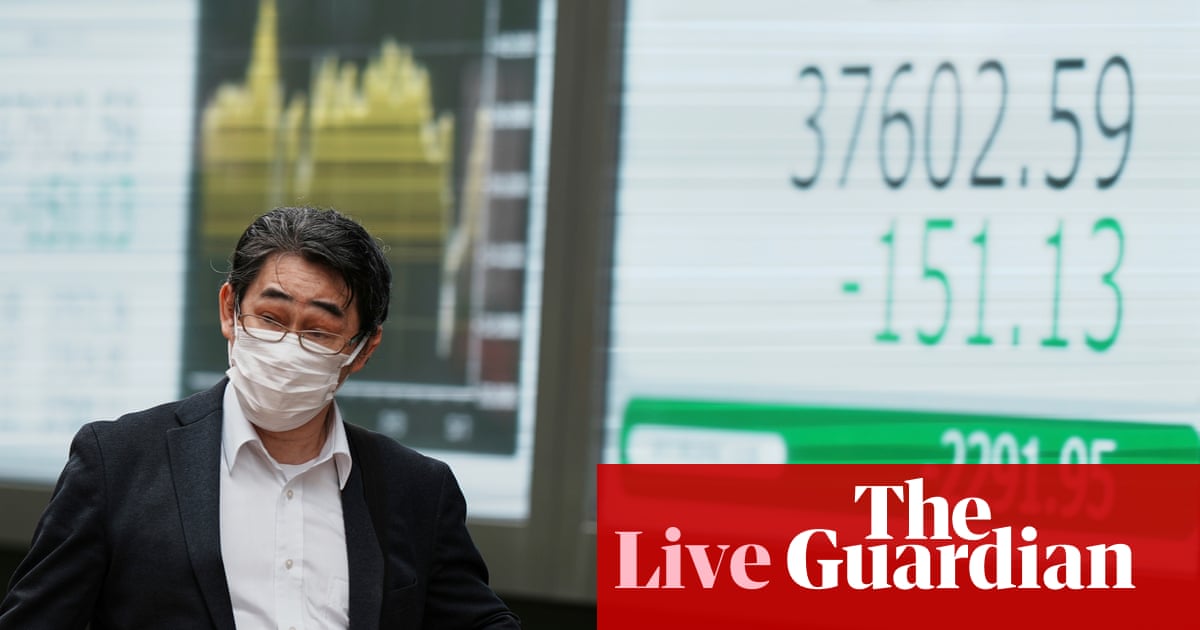Good morning, and welcome to our rolling coverage of business, the financial markets and the world economy.
How did the US lose its triple-A credit rating? Gradually, then suddenly.
Moody’sdealt the death blow on Friday afternoon, announcing it was cutting its rating on US government debt toAa1, one notch down from the gold-standardAaa.
This is 14 years afterS&Pbecame the first major agency to downgrade the US, withFitchfollowing suit in 2023.
Moody’scited the swelling US national debt – now $36trn – and growing interest costs, saying:
Treasury secretaryScottBessenttried to brush aside the issue, tellingCNNthat he “does not put much credence in the Moody’s” downgrade.
Bessenttook a similar line to NBC, telling their Meet the Press program:
Investors may take the same view. After all, Moody’s is only reacting to information already available to the market.
On the other hand…. US borrowing costs have been rising in recent years, adding to fiscal pressures. Moody’s downgrade could be an excuse for some bond-holders to sell, pushing down prices and raising yields (the interest rate on Treasury bonds).
The timing of Moody’s move has prompted some eyebrow-raising, at a time when some Republican rebels in Congress are opposing Donald Trump’s ‘big, beautiful bill’, fearing tax cuts will make the fiscal position even worse.
9.30am BST: S&P Global UK Consumer Sentiment Index
10am BST: Eurozone inflation report for April (final reading)
3pm BST: Conference Board Leading Economic Index of the US economy
US government bonds are weakening this morning, pushing the yield – or interest rate – on Treasury bills higher.
The US 30-year Treasury yield has risen to 5% this morning, up from 4.89% on Friday night just before Moody’s downgraded the US.
Kathleen Brooks,research director atXTB,says the markets are reacting to the news that the US no longer has the coveted triple A credit rating:
Drinks giantDiageohas predicted it faces a $150m per year hit from Donald Trump’s tariffs, at their current level.
In a statement to the City,Diageo– whose brands include Smirnoff vodka, Johnnie Walker whiskey and Astral Tequila,says:
Diageoalso revealed it is embarking on a $500m cost savings programme over the next three years.
Mohit Kumarof investment bankJefferiespredicts Moody’s downgrade will only have a “limited near term impact” on the markets, explaining:
The dollar has dropped around 0.33% against a basket of other currencies this morning.
The pound is up about a third of a cent to $1.331.
The immediate market reaction to Moody’s downgrade of the US credit rating is negative.
Asia-Pacific markets are lower today, while the futures market suggests Wall Street could drop by around 1% when trading begins.
In Toyko, Japan’sNikkeishare index is down 0.7% at 37,485 points in late trading. South Korea’sKOSPIhas lost 1.2%, and Australia’sS&P/ASXis down 0.7%.
Gold, a classic safe-haven asset, is up 0.75% at $3,225 per ounce.
Kyle Rodda,senior financial market analyst atcapital.com,says:
Good morning, and welcome to our rolling coverage of business, the financial markets and the world economy.
How did the US lose its triple-A credit rating? Gradually, then suddenly.
Moody’sdealt the death blow on Friday afternoon, announcing it was cutting its rating on US government debt toAa1, one notch down from the gold-standardAaa.
This is 14 years afterS&Pbecame the first major agency to downgrade the US, withFitchfollowing suit in 2023.
Moody’scited the swelling US national debt – now $36trn – and growing interest costs, saying:
Treasury secretaryScottBessenttried to brush aside the issue, tellingCNNthat he “does not put much credence in the Moody’s” downgrade.
Bessenttook a similar line to NBC, telling their Meet the Press program:
Investors may take the same view. After all, Moody’s is only reacting to information already available to the market.
On the other hand…. US borrowing costs have been rising in recent years, adding to fiscal pressures. Moody’s downgrade could be an excuse for some bond-holders to sell, pushing down prices and raising yields (the interest rate on Treasury bonds).
The timing of Moody’s move has prompted some eyebrow-raising, at a time when some Republican rebels in Congress are opposing Donald Trump’s ‘big, beautiful bill’, fearing tax cuts will make the fiscal position even worse.
9.30am BST: S&P Global UK Consumer Sentiment Index
10am BST: Eurozone inflation report for April (final reading)
3pm BST: Conference Board Leading Economic Index of the US economy
